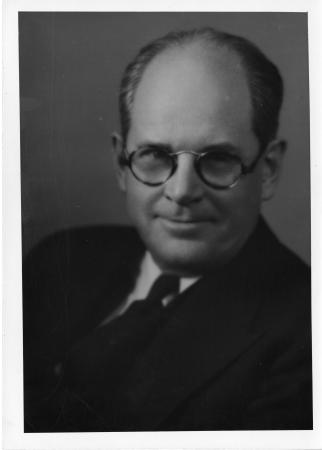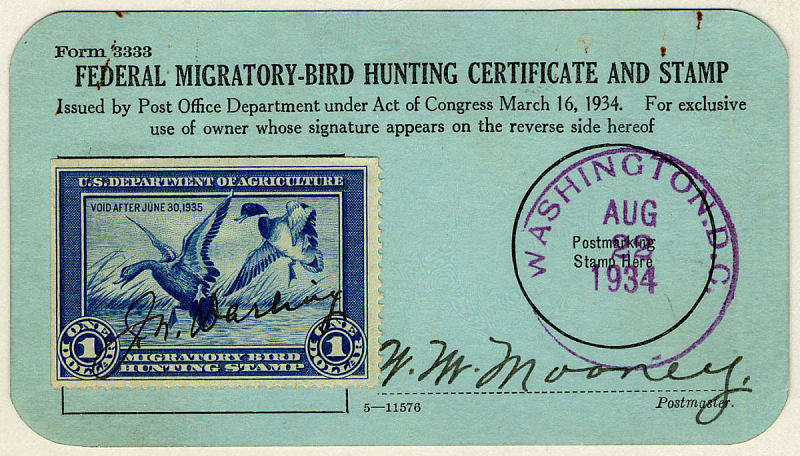Throughout his twenty-five years as a Science Service journalist, Frank Thone maintained an active correspondence with fellow scientists and conservationists. His letters in the Smithsonian Institution Archives both preserve his wit and offer a glimpse at the informal networking that helped shape how Americans perceived the natural world.
One of Thone’s correspondents was a fellow Iowan and conservation advocate. The political cartoons of Jay Norwood (“Ding”) Darling (1876–1962) in the Des Moines Register were nationally syndicated and won him two Pulitzer prizes. Like millions of Americans, Thone laughed at Darling’s adroit lampoons of bureaucratic actions, and his lively drawings of anthropomorphized ducks who lugged little suitcases as development forced them to abandon their cozy nesting sites. When Thone suffered from a “dragging-down cold” in February 1936, he even confessed to Darling that he felt “like a duck with waste oil on its feathers.”

By the 1930s, the threat to waterfowl was no laughing matter, however. Millions of acres of wetlands (essential breeding, nesting, and feeding grounds for migrating ducks, geese, and other birds) had been drained to create farmland. The persistent drought exacerbated the impact, causing biologists and wildlife managers to grow increasingly concerned about the precipitous drops in waterfowl populations.
In January 1934, President Franklin Delano Roosevelt appointed Darling to a new, three-person Committee on Wild-Life Restoration. The group quickly recommended federal acquisition and reclamation of several million acres of marginal farmland for use as waterfowl nesting areas—most of it wetlands that had been drained years earlier in government programs. And in March 1934, Roosevelt persuaded Darling to head the Department of Agriculture’s Bureau of Biological Survey. In that office, Darling helped to implement the new Migratory Bird Hunting Stamp Act, which required hunters to purchase one-dollar revenue stamps that funded establishment and maintenance of migratory bird refuges. Darling, though, went far beyond political arm-twisting. He put his artistic skills to work, designing the initial duck stamp. The original drawings for the stamp, and examples of all those subsequently produced, are in the collections of the Smithsonian’s National Postal Museum.
Darling and Thone continued their professional correspondence long after Darling left Washington in 1935 to return to his newspaper work. Darling also began to engage more energetically in political activism, helping to found the National Wildlife Federation (NWF) in 1938. Even as war raged around the world in the early 1940s, Darling and the NWF strived to strengthen coalitions between conservation and ecology interests, focusing on connecting disparate disciplinary experts.
In 1940, Darling complained to Thone that, for too long, “forestry exponents have had for their audience those who were tree conscious; water conservationists ... have been limited to such audiences as power, irrigation, and navigation groups; wildlife conservationists have had for their audience largely the sportsmen and bird fanciers. It seems to me quite the general rule that the groups who have listened to one specialty have not generally bothered to acquaint themselves with the equally important other branches of natural resources.” Years ahead of his time, Darling saw that collaboration, at all levels of government, among all types of private organizations and expert communities, and with the help of sympathetic journalists like Thone, would be key to effective conservation and to saving beleaguered wildlife.
Thanks to Darling, millions of acres have been preserved as habitats. As Thone wrote in a 1935 article about the new stamp program, “giving the country back to the ducks is not for the ducks alone,” because in “doing something for ducks, the Biological Survey is doing something for all wildlife.” Wetland reserves protected through the duck stamp program were eventually added to the National Wildlife Refuge System, administered initially by the Bureau of Biological Survey and then, after 1940, by the U.S. Fish and Wildlife Service.

As a tribute to Darling’s efforts, the Fish and Wildlife Service renamed a refuge for him in 1967 on Florida’s Sanibel Island, but his presence is “stamped” nationwide. The next time you visit or drive by one of America’s 567 national wildlife refuges, take a closer look at the sign. That iconic image of a goose flying free was designed by Ding Darling.
Related Resources
- Frank Thone, “Saving the Ducks,” Science News-Letter, Volume 27 (February 16, 1935), pp. 106-107.
- Editorial Cartoons of J.N. "Ding" Darling, Iowa Digital Library, Iowa University Libraries
- “Aces and Kings: War Cartoons by J.N. Darling” (New York Tribune, 1918). Courtesy of Smithsonian Libraries.
Produced by the Smithsonian Institution Archives. For copyright questions, please see the Terms of Use.



Leave a Comment